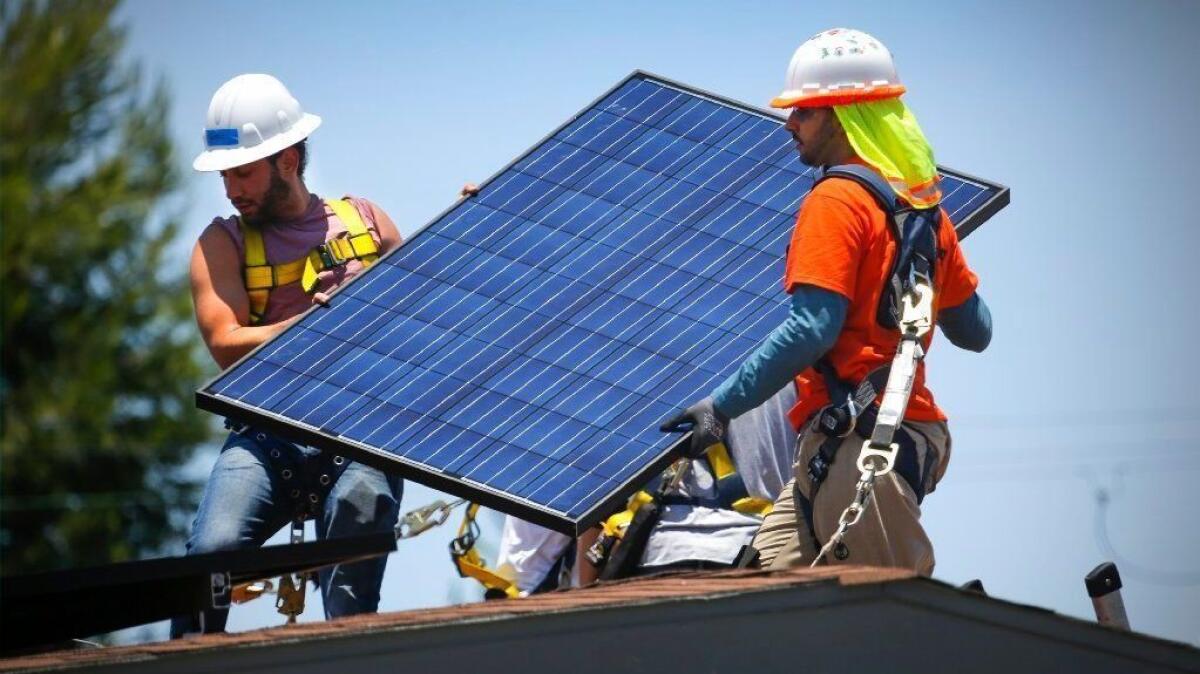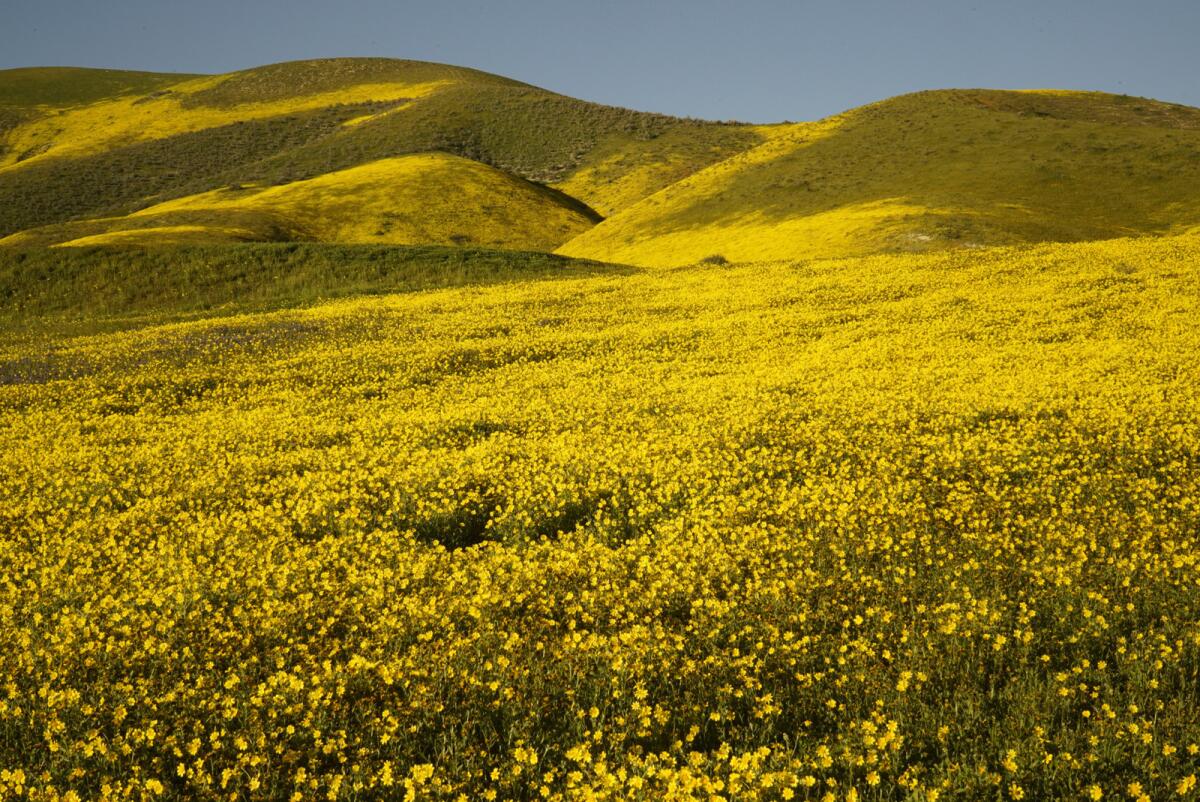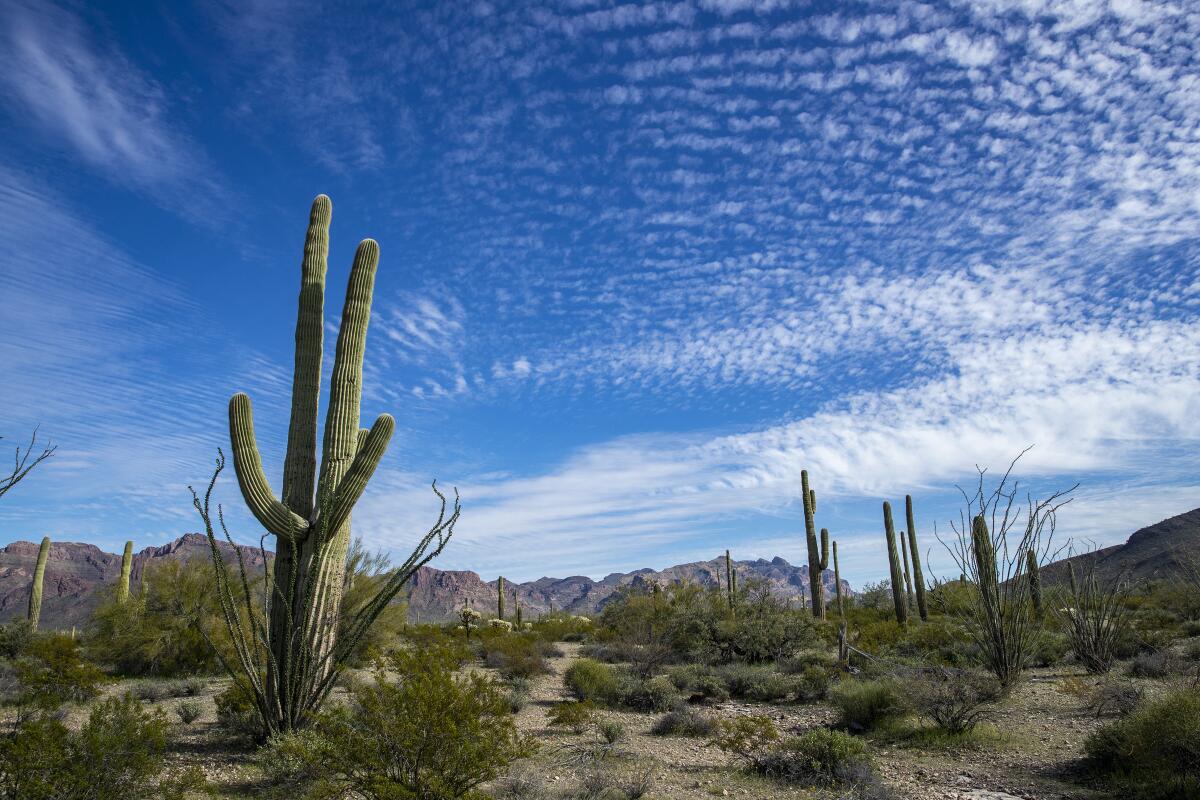California’s clean energy programs are mainly benefiting the rich, study finds
One lesson from the ongoing uprising against anti-Black racism is that the United States has made far too little progress against rampant inequality. The police killing of George Floyd has brought new attention to the fact that Black Americans breathe dirtier air, are more likely to be homeless and are far more likely to be killed by police, among many consequences of systemic racism.
A new study from a team of UCLA researchers illuminates a different — but related — manifestation of inequality.
Led by Eric Fournier, research director at UCLA’s California Center for Sustainable Communities, the team analyzed energy use data for every ZIP Code in Los Angeles County, home to more than 10 million people. They found that people living in areas more likely to be “disadvantaged communities” — defined by state officials as having high levels of unemployment, poverty, pollution and/or health conditions such as heart disease and asthma — use half as much energy, on average, as people in wealthier areas.
Here are some maps from the study, showing residential electricity and natural gas use by ZIP Code, with darker blue indicating greater use. In areas outlined in red, most census tracts have been designated by the state as disadvantaged communities:
The charts beneath the maps show that electricity and natural gas use are lower in poorer, more polluted areas.
If you’re familiar with Los Angeles County, you can probably figure that out by studying the maps. See those two dark blue blobs just a little ways in from the coast on both maps? That’s Beverly Hills and the ultra-wealthy Bel Air neighborhood.
Toward a more sustainable California
Get Boiling Point, our newsletter exploring climate change, energy and the environment, and become part of the conversation — and the solution.
You may occasionally receive promotional content from the Los Angeles Times.
Residents of those ZIP Codes (and also nearby Culver City) use more electricity, per person, than anywhere else in the county.
By contrast, many of the areas that use the least energy — illustrated in pale colors on the maps — are state-designated disadvantaged communities, including large parts of South L.A., whose residents are mostly Latino and Black. The racial makeup is no coincidence; the factors California evaluates in designating “disadvantaged communities” are strongly correlated with race.
Consider the city of Maywood, which is 98% Latino and has a median household income just under $40,000. In 2016, Maywood residents used less than one-tenth as much electricity, on average, as residents of Beverly Hills’ famous 90210 ZIP code.
Some low-income families often can’t afford to use enough energy to stay warm or cool. As a result, they “continue to live in less comfortable housing and pay a larger proportion of their income for that discomfort,” the researchers write.
By comparison, some wealthy families — who are more likely to be white — consume “in excess of what they require to meet their essential needs,” the study says. Excess consumption “has many causes, but often arises from individuals choosing to meet their needs by inherently more energy intensive means, such as purchasing large, single-family homes, or by overconsumption of energy services, such as leaving the air conditioning on while the home is unoccupied.”
It’s a provocative claim in a society built on the idea that there’s no such thing as too much consumption.
Fournier, the study’s lead author, acknowledged as much when I asked him about it. He said he and his colleagues “did think a lot about the choice of that word, in terms of what do you call that consumption at the high end. Is it excessive? Is it profligate?”
“This level of consumption is clearly beyond what you need to provide for your survival, to allow you to be a functioning member of society,” he told me.
Now let’s get into the climate policy realm. Similar to their energy-use findings, the researchers concluded that electric vehicles, plug-in hybrid vehicles and rooftop solar installations are way more common in wealthier areas. Here are the maps:
None of those findings are especially surprising. But California is trying to implement climate policies that not only reduce emissions, but also spread the benefits of clean energy equitably. For instance, there are incentives for low-income homeowners to go solar, and requirements for utilities to install electric vehicle chargers in heavily polluted areas. At least 25% of the proceeds generated by the state’s cap-and-trade auctions must be spent on projects that benefit disadvantaged communities.
The UCLA researchers concluded those policies aren’t doing enough, at least when it comes to solar panels and clean cars.
In addition to mapping out who’s got rooftop solar and electric vehicles right now, they projected the uptake of those technologies through 2030, based on a “business as usual” scenario where prices keep falling and similar types of government policies remain in place. They found that people living in disadvantaged communities will start installing solar panels and buying clean cars at higher rates — but they’ll still lag way behind non-disadvantaged communities, where rates of adoption will climb even faster.
And therein lies the study’s key conclusion: California’s programs to subsidize rooftop solar and electric cars are disproportionately benefiting wealthier homes that often use more energy than they need to live comfortably. And they’re disproportionately leaving behind lower-income families who often can’t afford to use enough energy to stay warm or cool, depending on the season, and who would benefit greatly from cost-saving clean energy technologies.
Fournier says the lesson for policymakers is clear: Redesign climate programs to distribute the clean energy wealth more equally, with the bulk of the money going to disadvantaged communities, whose residents are far more likely to be Black or Latino.
Maybe that means solar subsidies or energy-efficiency financing programs that target renters in multifamily homes, rather than homeowners. Maybe it means limiting electric vehicle rebates to low-income households, or offering larger rebates for a first car.
“If your actual objective is to close these gaps between disadvantaged communities and the more affluent communities, you have to think about being strategically unequal in the extent to which these incentives are available,” Fournier told me.

Fournier and his coauthors say it doesn’t make sense to keep spending so much public money on solar panels for homeowners who keep their giant houses air conditioned when they’re not home, or Teslas for families that already have multiple cars.
They also point out that clean energy technologies, good as they are at reducing greenhouse gas emissions, have downsides. Problems include raw materials supply chains that can destroy delicate ecosystems or exploit child labor; the potential difficulty of recycling hazardous waste from solar panels; and the degradation of wildlife habitat by poorly sited solar and wind farms.
Renewables are still a lot better for people and the planet than fossil fuels are. But the UCLA researchers say it’s not enough to keep making our energy use cleaner and more efficient, even as the wealthiest among us consume more than they need.
“At some point, you have to get to a place where you’re using less energy,” Fournier said.
Here’s what else is happening around the West:
TOP STORIES

Even if you haven’t been to Carrizo Plain National Monument, you’ve probably seen photos of the gorgeous wildflower blooms in “California’s Serengeti,” just a few hours north of Los Angeles. Now the Trump administration has approved Carrizo Plain’s first new oil drilling since it was designated a national monument in 2001. Here’s the story from my colleague Hayley Smith.
Electric utilities are pitching a sweeping plan to install electric vehicle chargers up and down the West Coast. The network of chargers for freight haulers and delivery trucks — which emit a disproportionate share of planet-warming gases — would be centered along Interstate 5 from San Diego to the U.S.-Canada border, as Rob Nikolewski reports for the San Diego Union-Tribune. The utilities behind the plan include the Los Angeles Department of Water and Power and Southern California Edison.
In last week’s newsletter, I discussed the immense water challenges facing the Colorado River Basin. So here’s some good news: In 2019, California used less Colorado River water than it has since the 1950s, as Brett Walton reports for Circle of Blue. The three Lower Basin states — Arizona, California and Nevada — used less Colorado River water as a whole than they have since 1986.
POLITICAL CLIMATE
Nevada will become the 17th state to adopt California’s vehicle tailpipe emissions standard. Here’s the story from Anna M. Phillips for The Times. This is part of an ongoing conflict that began when the Trump administration rolled back an Obama-era regulation to reduce air pollution from cars and tried to revoke California’s longstanding legal authority to set its own rules.
I wrote several months ago about a report finding that California is not on track to meet its climate change goals. The report recommended reforms to cap and trade, a controversial market-based program that officials are counting on for nearly half the state’s expected greenhouse gas emissions reductions over the next decade. Well, reforms might be coming: Rachel Becker reports for CalMatters that Gov. Gavin Newsom’s administration is re-evaluating whether cap and trade is working.
California’s high-speed rail authority is slowing things down. Lawmakers have been pushing back against plans to build the first stretch of the state’s electric bullet train in the Central Valley, rather than Southern California or the Bay Area. Now rail officials have yielded to that pressure by postponing the approval of their 2020 business plan, as Ralph Vartabedian reports for The Times.
Enjoying this newsletter? Consider subscribing to The Times
Your support helps us deliver the news that matters most, and makes newsletters like Boiling Point possible. Become a Los Angeles Times subscriber.
POWER STRUGGLES
I know nobody wants to hear this, but fire season has arrived. COVID-19 is scrambling preparations; here’s the view from San Diego, where firefighting teams are planning to isolate from each other, and where power shutoffs could push people to socially distanced community centers, per the Union-Tribune’s Rob Nikolewski. At a statewide level, the Union-Tribune’s Jeff McDonald explains how a federal judge may end up pushing utility companies to prevent fires more aggressively than state regulators are.
“If you would rather not receive future communications from Chevron, let us know by clicking here.” That was the last line of an email sent to journalists by a public relations firm making the case that Green New Deal-style policies are hurting Black communities, as Corbin Hiar reports for E&E News. Critics say Big Oil’s professed support for the Black Lives Matter movement is hypocritical, given the immense harm done to Black communities by fossil fuels, as Ilana Cohen reports for InsideClimate News.
Off-roaders are expected to return soon to Oceano Dunes, California’s only state park that allows vehicles to drive on the beach. But the area has been closed during the COVID-19 pandemic, and rare shorebirds known as western snowy plovers have started nesting in areas usually overrun by humans. Now the California Coastal Commission says State Parks employees illegally destroyed plover nests to prepare for the return of off-roaders, as my colleague Louis Sahagun reports.
AROUND THE WEST
There’s an old principle in western water law: “Use it or lose it.” The idea is that if you’ve got a water right, you can only keep it by putting your water to so-called beneficial use; speculators beware. Usually it’s an abstract threat, but not always; next week Colorado will release its once-a-decade “abandonment list,” calling out farmers, ranchers and other rights holders who aren’t using their water, as a prelude to potentially taking it away from them. Here’s the fascinating story from Luke Runyon at KUNC.
A hotel mysteriously burned to the ground in an old mining town in the Inyo Mountains, overlooking California’s Owens Valley. Brent Underwood and his partners bought the ghost town for $1.4 million in hopes of making it a tourist attraction; now those plans are in doubt, as Louis Sahagun reports. This being a western ghost town story, of course there’s some mystery; the hotel burned down 149 years to the day after it opened, and Underwood suggested the fire’s cause might be paranormal.

Giant saguaro cactuses are struggling to survive as temperatures rise and humans reshape the natural world. That’s the sobering takeaway from this story by the Arizona Republic’s Debra Utacia Krol, about the iconic cactus found in southern Arizona (home to Saguaro National Park) and Sonora, Mexico. These incredible plants can grow up to 60 feet tall, with more than 25 arms. But they’re reproducing in smaller numbers due to climate change, invasive species, cattle ranching and urban heat islands.
What do you want to know?
When you think about California’s climate future, what comes to mind? What keeps you up at night, and what gives you hope or gets you excited? What do you want to understand, and what should I?
This newsletter is for you, to help you understand how we’re changing our world and what we can do about it, and I want to hear your questions, concerns and ideas. Email me or find me on Twitter.
ONE MORE THING
Lots of heavy stuff this week, so let’s end on something cool.
Paul Rogers reported for the Mercury News that dozens of blue whales were spotted off the San Francisco coast last week, in what he described as a “rare influx of the largest animals on Earth.” The photos are gorgeous. This description left me speechless:
“Blue whales are the true giants of the Earth. They can reach up to 90 feet long, and easily weigh more than 150,000 pounds — as much as a fully loaded Boeing 737-800 jet with 180 passengers, luggage and a full tank of fuel. Their hearts, weighing up to 400 pounds and measuring five feet long, are by far the largest of any animal on earth. Their tongues can weigh as much as an African elephant, and their deafening underwater pulses and groans can be heard up to 1,000 miles away.”
I’ll be back in your inbox next week. If you enjoyed this newsletter, please consider forwarding it to your friends and colleagues.




